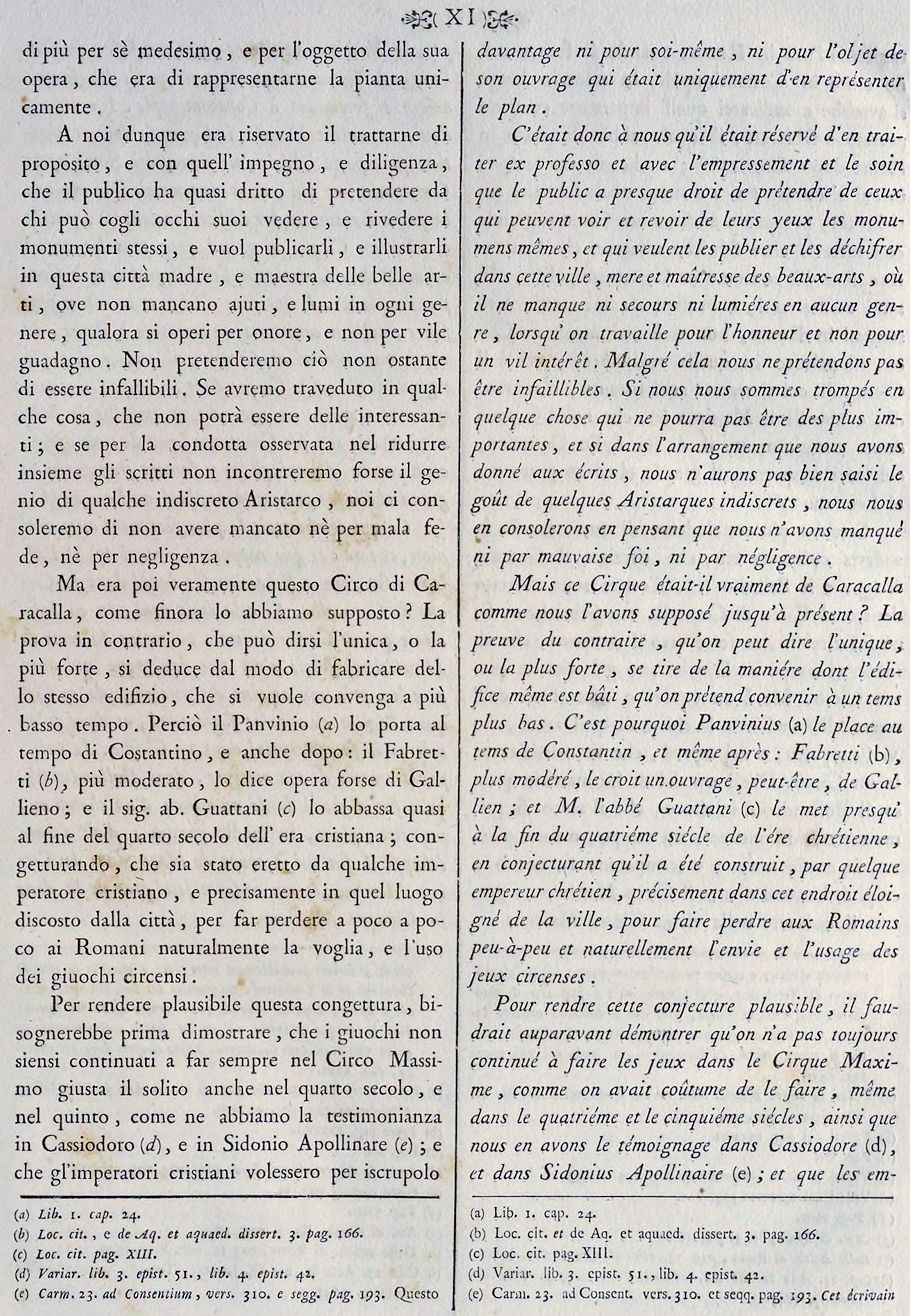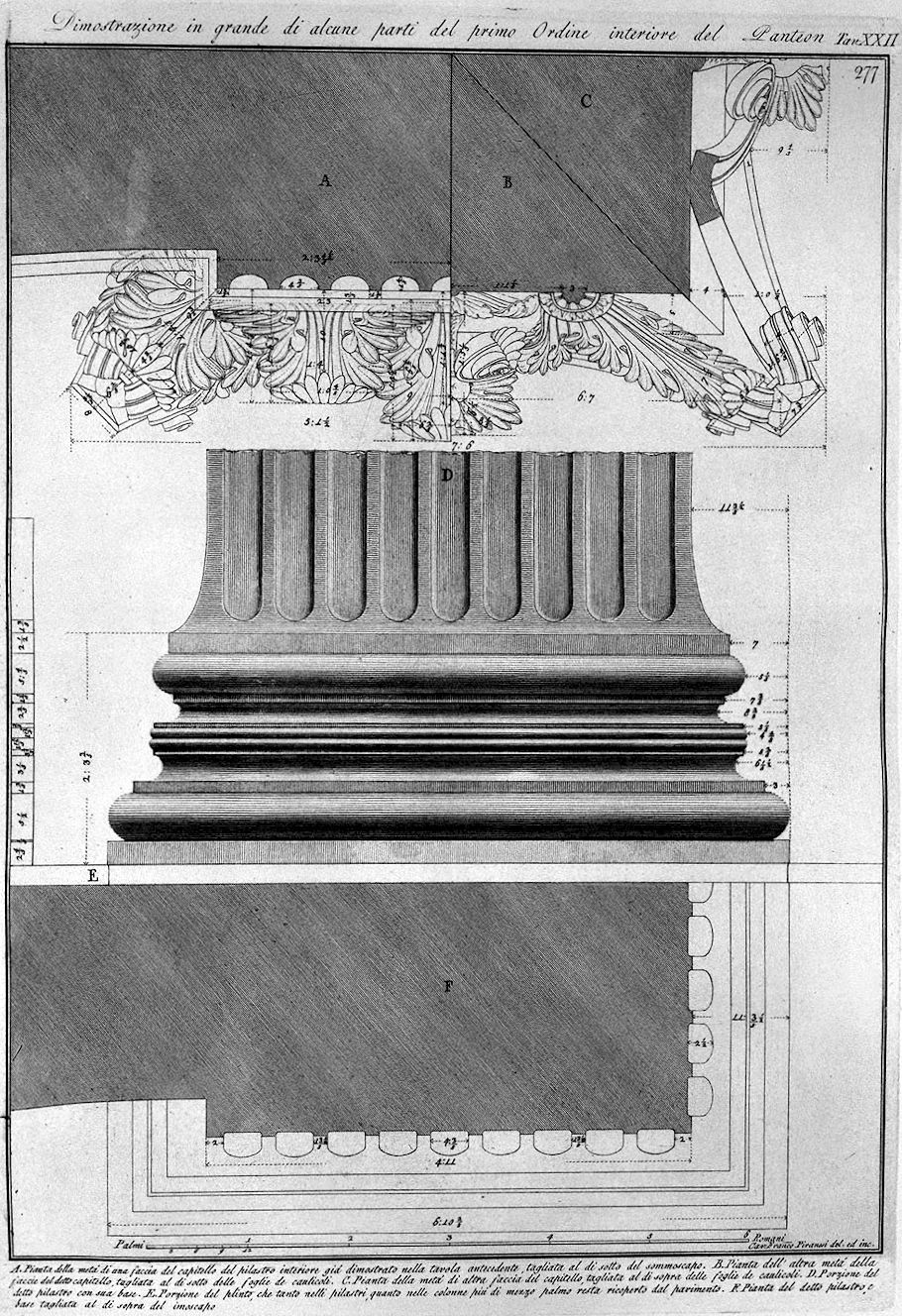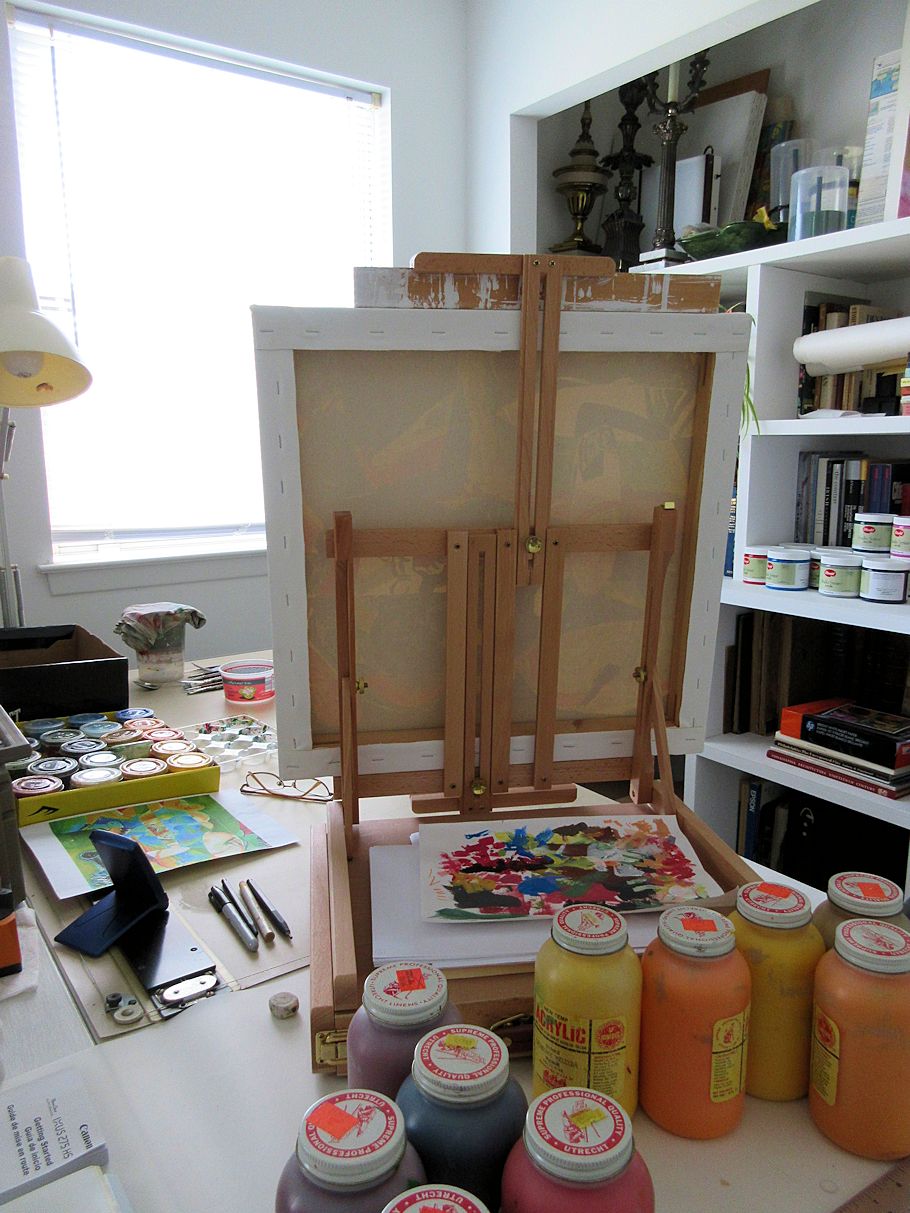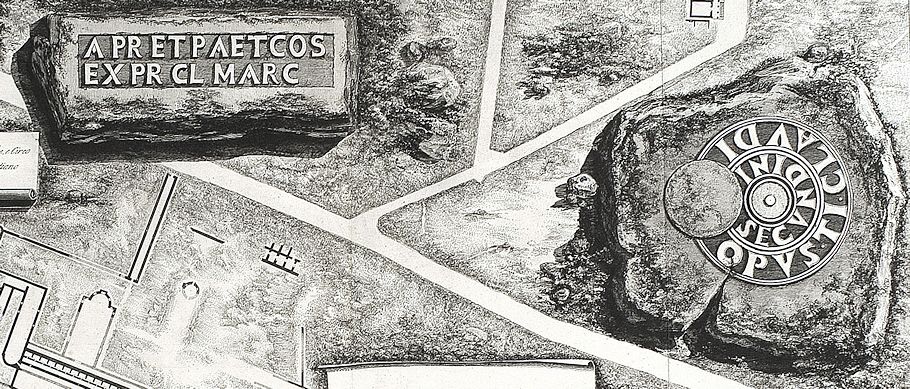19 June 1778 Friday
. . . . . .
1789
Descrizione dei circhi, particolarmente di quello di Caracalla e dei giochi in esso celebrati
Description of circuses, particularly that of Caracalla and the divine games celebrated in it

Nor could he do more for himself, and for the object of his work, which was to represent only the plan.
Therefore, it was reserved for us to deal with them on purpose, and with that commitment and diligence, which the public has almost the right to expect from anyone who can see with their own eyes, and review the monuments themselves, and wants to publish them, and illustrate them in this city, mother, and teacher of the fine arts, where there is no shortage of aids, and lights of all kinds, if one works for honor, and not for base gain. We will nevertheless not claim to be infallible. If we have caught sight of something, which cannot be of interest; and if, due to the conduct observed in compiling the writings together, we do not perhaps encounter the genius of some indiscreet Aristarchus, we will console ourselves that we have not failed either through bad faith or negligence.
But was it really this Circus of Caracalla, as we have assumed up to now? The proof to the contrary, which can be said to be the only one, or the strongest, can be deduced from the way of constructing the building itself, which is said to be suitable for a shorter period. Therefore Panvinio (a) takes it to the time of Constantine, and even later: Fabretti (b), more moderate, says it is perhaps the work of Gallienus; and mr. ab. Guattani (c) lowers it almost to the end of the fourth century of the Christian era; conjecturing, that it was erected by some Christian emperor, and precisely in that place distant from the city, to naturally make the Romans gradually lose the desire and the use of circus games.
To make this conjecture plausible, it would first be necessary to demonstrate that the non siensi games continued to be played always in the Circus Maximus as usual even in the fourth century, and in the fifth, as we have evidence of this in Cassiodorus (d), and in Sidonius Apollinaris ( And); and that the Christian emperors scrupulously wanted to remove their use in Rome, when they were so inciting them in Constantinople. In the second place, we would have to point out to us that Christian emperor inclined to manufacture; who lived in Rome after Constantine; and that at a time when it was hard to restore the ancient buildings (a), he thought of building such a large circus with all the other adjacent buildings (b). Constantine made the Hippodrome in Constantinople (c). In so many sacred and profane buildings erected or restored by him in Rome, the circus has never been named, nor the palace in that region (d), where the circus is concerned: indeed he restored, or enlarged, and embellished Massimo (e), who shortly afterwards ennobled his son Costanzo even more, by having the large obelisk now placed in the Lateran (f) transported there.
32 y.o. Francesco Piranesi 1 August 1790
Raccolta de'Tempj antichi, Vol. II.

Large demonstration of some parts of the first inner Order of the Pantheon
A. Plan of half of one face of the capital of the inner pillar already shown in the previous table, cut below the sommoscapo. B. Plan of the other half of the face of the said capital, cut below the leaves of the caulicles. C. Plan of half of the other face of the capital, cut above the leaves of the caulicles. D. Portion of said pillar with its base. E. Portion of the plinth which, both in the pillars and in the columns, is covered by half a handbreadth by the floor. F. Plan of said pilaster, and base cut above the imoscapo
Cav. Francesco Piranesi drawn and engraved
19 June 1812 Friday

Morning light clouds, wind SW Serly, temperature 68° rose to 80° by noon. A black cloud gathering in the NW at 1. Wind drew to NW about noon. James and H, Smith came to dinner and stayed the night.
19 June 2016

19 June 2022
Having made several Piranesian discoveries now myself, presuming to have at least some idea of Piranesi's reaction to discovering the intricate plan geometry of the circus, commonly known as Caracalla,9 feels grounded enough. Without doubt, Piranesi was thrilled by this shocking information, indeed brand-new knowledge of Rome's ancient circuses. And, again, the 'Pianta degli avanzi di un 'antica Villa, sue Fabbriche, e Circo volgarmente detto di Caracalla fuori di porta S. Sebastiano' plate is Piranesi's expeditious summation of that brand-new knowledge. Etched in the plate are two richly rendered fragments, an inscription and a brick stamp, and, over the complex site plan, Piranesi simply positioned these rendered fragments directly above the spots where "he" found them. Ample copies of the "Caracalla" plate were then printed to facilitate further site survey work, henceforth led by Francesco. Piranesi was particularly anxious for exacting circus dimensions, and the brick stamp saying, "work of Claudius II"10 suggested, hopefully, an indubitable imperial attribution of the circus remained forthcoming.

Rendered fragments, detail of Giovanni Battista Piranesi (attributed), 'Pianta degli avanzi di un 'antica Villa, sue Fabbriche, e Circo volgarmente detto di Caracalla fuori di porta S. Sebastiano' first state, circa 1775-78 in Le Antichità Romane vol. 1 (Universitätsbibliothek Heidelberg), 1787.
|
9. Marcus Aurelius Antoninus Caracalla, Roman emperor from 198 to 217.
10. Marcus Aurelius Claudius Gothicus, Roman emperor from 268 to 270.
19 June 2023 Monday
Just read this afternoon:
"When considering Piranesi's formation as an etcher, Bianconi, unable to ignore his apprenticeship to Giuseppe Vasi, employs a topos common in biographies of artists. He characterizes Piranesi as a pupil who, in order to gain possession of the most secret techniques of his master, goes so far as to threaten his life.
It was on the basis of this episode of alleged attempted murder, denounced not only as blatantly false but also as particularly defamatory, that Piranesi's son Francesco found it easy to successfully rebuff Bianconi. Through the good offices of Ennio Quirino Visconti and a sworn statement from the aged Vasi himself, Francesco appealed directly to the pope and obtained the suspension and withdrawal of the publication."
Mario Belivacqua, "The Young Piranesi: The Itineraries of His Formation" in The Serpent and the Stylus: Essays on G. B. Piranesi (2006), pp. 13-14.
So, yes, Bianconi's "Elogio storico" did disturb Francesco, and Francesco's "rebuff" may, perhaps, have been enough to prevent Bianconi from publishing Descrizione dei circhi, particolarmente di quello di Caracalla e dei giochi in esso celebrati. Still, two questions remain unanswered:
Why was Bianconi so against Piranesi in the first place?
and
Why did the Piranesis remain silent about their Circus of Caracalla work?
And early this evening, I finally get around to copy/pasting the Italian text of Bianconi's "Elogio storico" of Piranesi. Soon the text will be auto-translated into English, but a quick search within the text for the word 'Caracalla' provides the information that I really want to know.
Stava pure facendo ultimamente alcune ricerche sulle rovine del Circo detto di Caracalla, che si vedono a due miglia fuori della porta Capena, rovine tanto più degne del pubblico, quanto che questo circo è il solo a nostra notizia in tutto il mondo, di cui restino vestigia sufficienti per darci idea dell’architettura circense più composta di quello che si è sinora creduto. Strana cosa, che de’ circhi non ci faccia menzion Vitruvio. Avendo qualche amatore dell’arti antiche e nostro conoscente fatto egli pure indefesse ricerche sopra queste rovine, saremmo ben contenti di rendere qui giustizia agli studi del Piranesi, se di questi non ci fosse stato un mistero.
He was also doing some research lately on the ruins of the circus said of Caracalla, which can be seen two miles outside the Capena gate, ruins so much more worthy of publicity, since this circus is the only one we know in all the world over, of which sufficient vestiges remain to give us an idea of the circus architecture scene more composed than what has hitherto been believed. Strange thing, Vitruvius does not mention circuses. Having some lover of the arts ancient ones and our acquaintance also made tireless researches on these ruins, we would be happy to do justice to Piranesi's studies here, if of these there had not been a mystery.
And not just one mystery, for example, why hasn't anyone else already been writing about this Piranesi mystery?
|